Shining Some Light on the Invisible Race
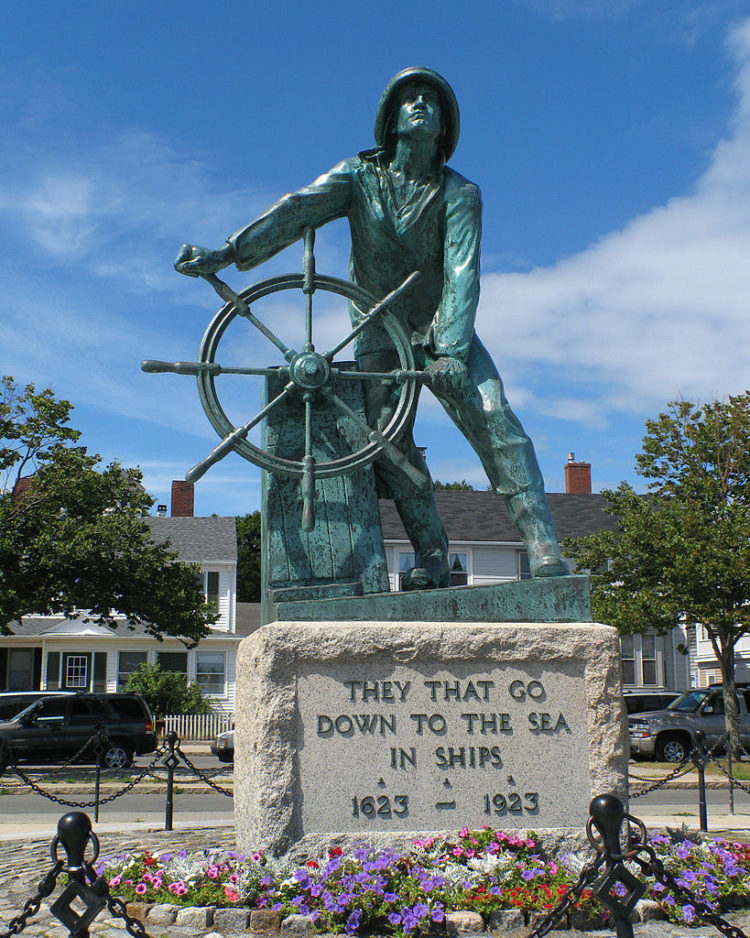
by Andrew Hamilton
The defining characteristic of WASPs is that they are much less ethnocentric than other peoples; indeed for all practical purposes Anglo-Saxon Protestants appear to be all but completely bereft of in-group solidarity. They are therefore open to exploitation by free-riders from other, more ethnocentric, groups. [1]
Andrew Fraser
THERE IS A woeful lack of ethnic consciousness and cohesion among Anglo-Saxons worldwide.
In a groundbreaking essay published in 1980, John Tyndall, former head of the British National Party, defined the Anglo-Saxon ethnos as consisting of the English, Scots, Welsh, Anglo- and Scots-Irish communities and their counterparts in Australia, New Zealand, the United States, and Canada. [2] To the foregoing, I would add Anglo-Saxons in Rhodesia and South Africa.
Descendants of New England’s Puritan settlers constitute a subset of this worldwide group. Racial invisibility and the absence of ethnic pride or self-awareness characterize this group as much as the wider Anglo-Saxon ethnos of which it is a part.
I will try to shed some light on the Yankee component of the “invisible race.” Because this article is written for a symposium devoted to the Puritans, their influence, and “everything New England,” my focus is on New England Yankees wherever they may live.
What Ethnicon?
The ethnic group has a limited number of ethnicons, all less than satisfactory: WASPs, Brahmins, New Englanders, Old Stock Americans, Northerners, Yankees. The slippery, imprecise term “WASP” is especially objectionable. Prior to the mid-1960s “WASPs” never referred to nor conceived of themselves as “White” “Anglo-Saxon” “Protestants.”
Robert C. Christopher, a journalist and academic with murky intelligence ties, was a member of the Council on Foreign Relations who regularly rubbed shoulders with the post-WWII elite. Of mixed ethnicity, but part-Yankee on his mother’s side, Christopher wrote an anti-Yankee polemic called Crashing the Gates: The De-WASPing of America’s Power Elite (Simon and Schuster, 1989). In Chapter Two he said, “I can still recall, in fact, how puzzled one of my mother’s Yankee aunts was when sometime in the late 1950s I applied the term [WASP] to her.”
As secretary of the Pulitzer Prize Board, Christopher administered the Prizes. He refused to revoke New York Times journalist Walter Duranty’s Pulitzer for dishonest reporting from the Soviet Union in the 1930s. Duranty (“Stalin’s apologist”) and the Times deliberately concealed the Soviet-induced Ukrainian famine from the world.
“WASP” was first formulated and applied privately in the 1950s by academics to describe the American social element Jewry hated and envied the most. Jews coveted its status and possessions (including its women) from the beginning of the 20th century.
Conveniently, the acronym excludes the wealthy, powerful, ultra-privileged, overbearing Jews themselves. Tellingly, though, it describes them to a T. If you’ve ever been attacked by a swarm of wasps you’ll know what I mean.
Before WWII, Jews savagely assailed WASPs as “Nordics” in their multipronged campaign against the 1924 Immigration Act, their oily, underhanded censorship of Madison Grant’s stirring book The Conquest of a Continent (Scribner’s, 1933), and their suppression of American identity, racial consciousness, and pride. Jews enlisted the services of corrupt, envious, gullible, resentful, status-seeking Gentiles in their successful effort to split the ranks of the majority.
An obvious purpose of the clumsy new epithet was to isolate their intended prey, America’s founding stock (strictly speaking, “WASP” applies to Southern Whites as much as it does to New Englanders), by ostentatiously excluding newly-arrived White ethnics (“You’re not to blame! You’re fellow victims!”) so they would assist the Jews in their dirty work. Now, with non-Whites from everywhere on the planet available to perform the task, White ethnics are being discarded too.
“Brahmin” and “WASP” carry strong connotations of undeserved wealth, power, and privilege — despite the fact that America was their country! Anybody seriously claiming in 2020 that the handful of pathetic, numerically, economically, and socially diminished “WASPs” are anything more than superannuated relics, diverting social baubles, or glorified errand boys (the Bush family) is an intellectual joke.
There are a handful of ruthless, ambitious individuals remaining, but without exception, they identify with and advance the interests of a controlling Jewish-globalist caste in a way that benefits its members and themselves, but is fatal to their race and ethnos.
“WASP” is also an acronym. Acronyms first inundated America during the Jewish Administration of Franklin Roosevelt in the 1930s with its countless alphabet soup agencies. Often they are patently absurd constructions: “USA PATRIOT” Act.
From a racial standpoint nameless farmers, laborers, or anybody else of old New England stock are as much part of the ethnos as any (today, imaginary) elite group, so WASP really does not serve. Consequently, I do not use “WASP” as an analytical term the way Andrew Fraser and so many others do.
On the other hand, E. Digby Baltzell’s popularization of the term in The Protestant Establishment (1964) made sense because he was a glorified multiracialist propagandist, well-remunerated socially and economically for his mercenary services. He advocated a world government ruled by a small, “meritocratic” caste of upper-class Jews, Whites, and non-Whites who would, he claimed, exhibit Puritan virtues. But mostly he cared about Jews.
“Puritan” is likewise a dirty word. As an Establishment writer noted back when America was still White: “Of the groups composing our ancestry, the Puritans have not been one of the more admired. Writers have habitually referred to them as vindictive and cruel; and to most people “Puritanism” evokes little more than an image of something gloomy and repressive.”
Perhaps the least-bad ethnicon is “Yankee.”
The Puritans in America
The following paragraph provides a useful summary of Puritans and their Yankee descendants as an ethnos rather than a religious group.
Puritanism originated in East Anglia in England, spread to New England, and became the most important cultural influence in the United States beginning in the 18th century down to the mid-20th century. East Anglian Puritans “became the breeding stock for America’s Yankee population” and “multiplied at a rapid rate, doubling every generation for two centuries. Their numbers increased to 100,000 by 1700, to at least one million by 1800, six million by 1900, and more than sixteen million by 1988 — all descended from 21,000 English emigrants who came to Massachusetts in the period from 1629 to 1640” (Fischer 1989, 17).
Actually, subsequent Anglo-Saxon immigrants were also incorporated into the Yankee ethnos.
The quotation is from a monograph entitled Diaspora Peoples by Kevin MacDonald. It was published as a preface to the 2002 paperback reprint of his book A People That Shall Dwell Alone: Judaism as a Group Evolutionary Strategy (Westport, Connecticut: Praeger, 1994). Puritans are one of the diaspora peoples discussed. The paragraph relies upon David Hackett Fischer’s Albion’s Seed: Four British Folkways in America (New York: Oxford University Press, 1989), a secondary source.
Plymouth Plantation (the Pilgrims) was founded in 1620, and the Massachusetts Bay Colony in 1630. The Puritan Great Migration to New England occurred during the decades 1620-1640, consisting of a few hundred Pilgrims (though they were not called Pilgrims at the time) who went to Plymouth Colony in the 1620s, and c. 20,000 English men, women, and children who settled in the Massachusetts Bay Colony between 1630 and 1640. It is important to keep the asymmetry between these two communities in mind.
Without access to Fischer’s book, I can’t evaluate the sources and reasoning behind his population math, but such confident precision seems unlikely. As early as 1700 the former commonwealths no longer existed, and the region’s strict religious orthodoxy had seriously eroded.
As for the figures presented for each century, worthwhile approximations might be formulated, but they would become more problematic the farther away from 1700 you move. Hard data would be necessary to support them, and “Yankee population” would need to be precisely defined. What percentage Yankee ethnicity are we talking about? To understand their significance you would have to compare the numbers against the overall size of the American population on each date given. By 1988 you are really at sea ethnically (assuming you mean race, which Fischer, a culturalist, probably did not) and also mathematically.
Despite this, I sense that the Yankee ethnos remained demographically robust until the 1920s-1940s. This impression is reinforced by Yale geographer Ellsworth Huntington, a descendant of a large New England family that originated in 17th-century Massachusetts, who made a detailed statistical survey of living Americans bearing his family surname, the majority of whom were not famous. He concluded that Huntington descendants were still relatively ethnically unmixed at the time he wrote. [3]
The original Puritans had severe theological disagreements with the Church of England, a state entity formed less than a century earlier (1534) when King Henry VIII split from the Roman Catholic Church. So-called Separatist Puritans insisted on establishing independent congregations of their own outside the state church. A group of Separatists settled in Holland for 12 years but feared losing their Englishness. This was one reason they left for America in 1620.
The Mayflower with 102 passengers departed Plymouth, England late in the year, meaning the ship arrived in America in November and the Pilgrims made landfall in late December — 400 years ago on December 18, 2020. Their intended destination had been the warmer Colony of Virginia, where their land grant was, but the ship was blown off course. The story of the Pilgrims’ troubled sea voyage and first winter is truly harrowing.
A 1960 book randomly listed among Mayflower descendants Boston’s Adams family, Ralph Waldo Emerson’s wife, Henry Wadsworth Longfellow, Ulysses S. Grant, the first Mrs. Jefferson Davis, William Howard Taft, J.P. Morgan, John D. Rockefeller, Jr.’s first wife Abby Aldrich (they did not divorce, she died) and Franklin D. Roosevelt.
By 1897, when mass non-Anglo-Saxon immigration to the country was completely out of control, the Mayflower Society was founded in New England. At the time membership doubtless tilted heavily to old stock Americans of wholly or primarily Puritan descent. Today membership requires proof of descent from at least one Mayflower passenger in 1620. This doubtless encompasses many non-White, mixed race, and ethnically conglomerate people.
The Society now has over 150,000 members with such proven descent. A 2018 news article claims “There are an estimated 10 million living Americans and as many as 35 million people worldwide who descended from the Pilgrims, according to the General Society of Mayflower Descendants.” Quite a feat, considering that 45 of the ship’s 102 passengers died during the first winter.
The members of any of the groups (150,000, 10 million, or 35 million) that can legitimately be classified as Yankee today, or even more broadly, Anglo-Saxon, must be rather small, though they would numerically concentrate more in the first and second categories.
A larger, higher-status, and more economically prosperous Puritan group did not break with the Church of England but tried to reform it from within. These were the settlers who established the Massachusetts Bay Colony headquartered at Boston.
They were called Non-conformists, but under the influence of Plymouth Colony community leader Samuel Fuller, an original Mayflower passenger, the new Bay Colony residents soon adopted the organizational structure of the Plymouth Church. Every town became an independent Congregational community with its own church, pastor, teacher, and covenant, thus making Bay Colony Non-conformists de facto Separatists.
I’ve previously outlined the sharp demographic, social, and economic differences between Plymouth Colony and the Massachusetts Bay Colony, so there is no need to rehash them here. Despite the superstar status of the Mayflower and Plymouth Colony in American lore, the Bay Colony was the more historically and demographically important of the two.
The longevity of the two Puritan commonwealths in America can be illustrated by way of analogy. Plymouth Colony was formally absorbed into the Province of Massachusetts Bay in 1691, after an independent existence of 71 years. Substituting 2020 for the 1691 end date is equivalent to 1949-2020 for us; for Massachusetts Bay Colony the figures are 1959-2020 (61 years).
Robust Population Growth
Returning to Kevin MacDonald’s Diaspora Peoples and David Hackett Fischer, it is said the leading Puritan families of East Anglia (i.e., before they left England) intermarried with great frequency.
In America, New England Puritans
engaged in a much lower incidence of exogamy [here meaning miscegenation] with the native Amerindian population (as was the case in the Spanish and especially the Portuguese colonies in the Americas), or with Black slaves (as in the Southern states), or even other European ethnic and religious groups [emphasis added] (as in the Mid-Atlantic states).
Furthermore,
The great majority of the Puritan founders of Massachusetts arrived with their families (Fischer 1989, 25). . . . “Households throughout Massachusetts and Connecticut included large numbers of children, small numbers of servants and high proportions of intact marital unions. In Waltham, Massachusetts, for example, completed marriages formed in the 1730s produced 9.7 children on the average. . .” (Fischer 1989, 71).
This is consistent with historian John Demos’ findings for Plymouth Colony:
The popular impression today that colonial families were extremely large finds the strongest possible confirmation in the case of Plymouth. A sample of some ninety families about whom there is fairly reliable information, suggests that there was an average of seven to eight children per family who actually grew to adulthood. The number of live births was undoubtedly higher, although exactly how much higher we cannot be sure. . . .
The rate of infant mortality in Plymouth seems to have been relatively low. In the case of a few families for which there are unusually complete records, only about one in five children seems to have died before the age of twenty-one. Furthermore, births in the sample come for the most part at roughly two-year intervals with relatively few “gaps” which might indicate a baby who did not survive. All things considered, it appears that the rate of infant and child mortality in Plymouth was no more than 25 per cent — less than half the rate in many parts of the world today.
These figures seem to indicate a surprising standard of health and physical vigor among Plymouth residents, and a study of their longevity — the average life expectancy in the colony — confirms this impression. . . .
The figures are really astonishingly high. Indeed, in the case of the men, they compare quite favorably with what obtains in this country today. (The life expectancy of an American male of twenty-one is now a fraction over seventy, and for a female of the same age, is approximately seventy-six. . . .)
The difference in the results for men and women is mainly due to the dangers attendant in childbirth. A young woman’s life expectancy was seven years less than a man’s, whereas today, with childbirth hazards virtually eliminated by modern medicine, it is six years longer. . . . If a woman survived [her childbearing middle] years, her prospects for long life became at least as good as a man’s, and indeed a little better. A majority of those who lived to a really old age (ninety or more) seem to have been women. [4]
Note that the figures in the table are averages, meaning many families had more children than the number shown.
Demos expanded his paper into a book, A Little Commonwealth: Family Life in Plymouth Colony (New York: Oxford University Press, 1970; thirtieth-anniversary edition with a new foreword by the author, 2000) that has been called “a classic in early American history.”
The author, who became a professor at Yale, is himself emblematic of the persistence — and demise — of the Yankee ethnos. His Greek father was born and raised in Turkey (then part of the Ottoman Empire), while his Yankee mother was a member of the Putnam family that traced its lineage to Salem in Massachusetts Bay Colony. Consistent with Yankee naming customs, Demos’ middle name is his maternal family name: Putnam.
Yankee Exodus
Pushing first along the coast of the Atlantic Ocean, then inland, Puritans, later Yankees, ultimately spread across the entire northern tier of the U.S. as far as California and Hawaii. Stewart H. Holbrook called this mass migration, coinciding with the settlement of the continental United States, “the Yankee exodus.” [5]
A self-described “low-brow” popular historian who spent his adult life in the Pacific Northwest, Holbrook noted the invisibility of his ethnic group in the Foreword.
My interest in migration from New England began some forty years ago [1910], when I first became conscious of the many deserted hill farms in my native Vermont, and in New Hampshire where I also lived. . . . The fact that they had been abandoned seemed to me a great tragedy. It still does. . . .
I sought to inform myself on the matter. But although I found several hundred works dealing with the migrations to America of all the many different peoples of Europe, and some from Asia, and although these books told exactly where the Irish, the Germans, the so-called Scotch-Irish, the Scandinavians, and on to include Poles and Russians and Italians and many another group had settled, and of their valuable contributions to America, I could discover in all that welter of books only one dealing with the movements of Yankees. This was a master’s thesis by Lois Kimball Mathews, published as long ago as 1909, which, though able, brought the story down only to 1860 and only as far as the east bank of the Mississippi. . . . [Mathews intended to write a follow-up volume extending her account westward and down to her own time, but never completed it.]
It seemed to me that the lack of a detailed work on the migration of Yankees and their influence constituted a sizable void in the American story. . . .
I started in earnest to set down an account of what by then seemed to me the most influential migration in all our history. The strange race of Yankees not only permeated every last reach of the Republic; but almost always they made their impact felt. Their inventions, at home and elsewhere, changed the whole pattern of settlement in the West and South. Their fanatical respect for education led them to perform prodigies for learning in every state. Their shrewdness and great industry in business and commerce made them both welcome and feared. Only too many of the emigrating Yankees also felt a powerful urge to make others like themselves, especially in the matter of so-called morals — including Temperance — and this was the cause of making them, properly enough, loathed or hated.
Despite the lapse of 70 years, nobody has explored the story further. The fate that befell Mathews’ book in 1909 also befell Holbrook’s in 1950. An Amazon purchaser said of the latter book in 2015: “I think this is the ur-source for the topic. It could benefit from some updating in the light of new discoveries, but its shelf-life expired fifty years ago, so I’m not holding my breath.”
Daniel Chauncey Brewer (1862-1932) wrote,
The New England of the early nineteenth century was fairly bursting with repressed vigor, capacity for constructive upbuilding, and vital power.
This was to find immediate outlet in two directions — first, in the occupation of new fields of activity in the West, and second, through intensive developments. [Emphases in original.]
Curiously enough the effort directed toward each end supplemented the other in hastening the close of Anglo-Saxon domination in New England. One by withdrawing from all of the six States with which we are concerned, the most adventurous of the homogeneous population. The other by bringing foreign labor of all sorts and conditions into the section. [6]
English travel writer Frances Trollope, the mother of novelist Anthony Trollope (Barchester Towers, The Way We Live Now), who journeyed up the Mississippi from New Orleans and lived for a time on the Ohio frontier, vividly described the mass westward movement of Yankees she witnessed in its incipient stage in 1830:
[A] vast continent, by far the greater part of which is still in the state in which nature left it, and a busy, bustling, industrious population, hacking and hewing their way through it. . . . The wonderful facility for internal commerce, furnished by the rivers, lakes, and canals, which thread the country in every direction, producing a rapidity of progress in all commercial and agricultural speculation altogether unequalled. This remarkable feature is perceptible in every part of the Union into which the fast spreading population has hitherto found its way, and forms, I think, the most remarkable and interesting peculiarity of the country. I hardly remember a single town where vessels of some description or other may not constantly be seen in full activity. . . . [7]
Lois Kimball Mathews said in the book Holbrook cited, “Wherever Puritan blood has gone, Puritan traditions have been carried,” imprinting “the influence these transplanted Englishmen have exerted, the institutions they have wrought, the character ingrained by inheritance and altered by environment which differentiates them from any other element in the United States.” [8]
The exodus from New England between 1830 and 1840 produced a sharp decline in the Yankee population in its geographic cradle. Unable to successfully compete with Midwestern agriculture, many of those who remained turned to commerce and manufacturing, creating demand for foreign labor to run the new factories.
“By the call of the frontier,” Mathews wrote, “the character of New England was changed. When one notes how many of the cities and towns of New England are to-day [1909] controlled politically by those who have neither Puritan traditions, Puritan background of ancestry, nor Puritan ideals, one feels dismayed . . .” But “The history of New England is not confined to six states; it is contained in a greater and broader New England wherever the children of the Puritans are found.” [9]
The Conquest of New England by the Immigrant
Two decades later, greatly disturbed by the mass influx of foreigners, attorney Daniel Chauncey Brewer propounded a much more pessimistic view.
The swamping of classic New England by immigration is a matter of the utmost consequence to every inhabitant of this section, and to the Nation. [Brewer’s book chronicled the process.] Yesterday Yankees were a compelling factor in the Republic. As a people they are now of the past. Hundreds of thousands of them remain in their old stamping grounds. Millions as individuals are scattered through the United States. As a community they no longer exist. Hardly had their sun risen than it colored the skies at setting. Today [foreign] men and women of recent European birth physically possess New England, and probably control its vote. [10]
Note Brewer’s use of “Yankee” as an ethnicon instead of anything resembling “WASP,” which had not been coined yet. His focus was not on some elite, “Brahmin” subset of people as the Jews’ is, but rather on the entire ethnic group.
Daniel Chauncey Brewer’s forebears arrived in the Bay Colony in 1634. He was born into a prominent Boston family that originally hailed from Springfield, Massachusetts, where a Daniel Brewer was pastor of the First Congregational Church in 1694.
The given names “Daniel” and “Chauncey” reappeared constantly over the generations. To cite one example, Brewer’s father, a prominent nurseryman, and the author’s own son who died in infancy, were both named Daniel Chauncey Brewer too, though without a “Sr.,” “Jr.,” or Roman numeral to distinguish them. Such suffixes, which are common among New Englanders, are another identitarian clue. (“Senior, Junior & Name Suffixes in General.”)
Comparing the U.S. Census tabulations of 1850 to those of 1920 demonstrates “the pitiless suddenness with which a civilization may be blotted out.”
The author harshly criticized his people’s irresponsibility:
It has remained for the descendants of a vigorous British stock to win an unenviable record, without precedent for pusillanimity in the vital matter of race integrity. . . . (p. 7)
For a period which begins with the birth of a middle-aged New Englander now living, to the present moment not only the Eastern States but all industrial America have been joyously and idiotically naturalizing every alien whom they could cram into the body politic. (p. 121)
Because it was “too late to do much for the Yankees as a people,” Brewer hoped a numerically diminished younger generation would impart Yankee values to the newcomers, thereby “perpetuating the culture [emphasis added] that originated” with the Yankee, whose days were numbered.
Citizens concerned with replacement migration and ethnic cleansing today should be aware that mass immigration a century ago closely paralleled our own in many ways.
This truism is forcefully driven home by Lothrop Stoddard’s neglected chronicle of the first inundation, Re-forging America: The Story of Our Nationhood (New York: Charles Scribner’s Sons, 1927). Due to the recent passage of the Immigration Act of 1924, he was overly optimistic about the future, but his analysis is still educational and timely. (Another little-known Stoddard work, Into the Darkness: Nazi Germany Today [New York: Duell, Sloan & Pearce, 1940], remains one of the best accounts of NS Germany in English.)
Stoddard’s background was classically Yankee. His ancestry extended back to Solomon Stoddard, an influential Congregationalist minister in the Massachusetts Bay Colony. Solomon’s wife (Lothrop’s several times great-grandmother) was the sister of Sir George Downing, after whom Downing Street in London is named.
Theologian Jonathan Edwards was Solomon’s grandson, hence Lothrop Stoddard’s kin, as were numerous other prominent men bearing the family surname of whom Solomon was the progenitor: soldier Amos Stoddard, travelers and authors Charles Stoddard and John Lawson Stoddard (Lothrop’s father), educator John Fair Stoddard, and chemist John Tappan Stoddard.
Multigenerational family configurations like this are a Yankee hallmark that you come instinctively to recognize. Combined with unique family naming patterns they help draw the Yankee ethnos into the light in surprising and unexpected ways.
It helps you “see” them.
Are Puritans-Yankees-“WASPs” Uniquely Evil or Misguided? Are They Responsible for All Our Ills?
The Establishment answers these questions with resounding condescension: “Yes!” An endless stream of sewage attacking WASPs in books, articles, movies, TV shows, and academia has poured forth for a century now. I pay no heed to that. Honest sentiments never issue from forked tongues. They are liars and haters, and that will never change.
It’s so-called “conservatives” I’m focusing on.
In 1991, Richard Brookhiser, a William Buckley employee at National Review, wrote a book called The Way of the WASP. The Conservative Book Club Bulletin devoted a two-page spread to it, breathlessly declaring: “Richard Brookhiser is a brave one. Doesn’t he realize that if you’re pro-WASP you’re likely to be called racist, sexist, elitist, or you-name-it? Yes, he knows all this, yet he plunges in.”
Brookhiser favored open immigration and cited anti-White Jew Norman Mailer as authority for his assertion that “the Negro” ought to emerge as “a dominating force in American life.” WASPdom is merely a set of values, a state of mind, a way of thinking and behaving that anybody can “internally assimilate” — and we’d all be better off if they did. Any alleged racial component is “ethnic humbug.”
Instauration magazine’s review, “A Convoluted Defense of WASPs” (April 1991), called Brookhiser a “miscegenator”: “A German Catholic on his paternal side, English on his maternal, he is married to a Jewess. [He still is. They live in Manhattan, with a second house in the Catskills.] It is not known if he has any children but, if he has, they will not be WASPs and will quite likely be anti-WASPs.”
The good news: The couple had no children.
The bad news: Using her credentials as a psychotherapist with access to elite mass media and book publishers, his wife proselytizes White women: Beyond Motherhood: Choosing a Life without Children (1996); Selfish, Shallow and Self-Absorbed: Sixteen Writers on the Decision Not to Have Kids (2015); The Golden Condom and Other Essays (2016).
“Conservative” part-Jew and 100% philo-Semite Michael Lind is a Yankee-hater of the first water. He’s made a lucrative living peddling crack-brained narratives designed to destroy White America and advance Jewish and other non-White racial interests.
Old miscegenator and Mexico expatriate Fred Reed, who is married to a Mexican and sired Mestizo children, hates Yankees — and Nordics — with a passion. While lauding Mestizos and Mexico, he chortles about the racial destruction of his homeland, gleefully rubbing his hands over the comeuppance of “nativists” and White nationalists. But like Lind, he loves Jews.
Reed’s philo-Semitism is so extreme that Jew Paul Gottfried, another conservative pundit who blames Puritans, Yankees, and Protestants for the world’s problems (accompanied by the refrain, Jews aren’t responsible, it’s ridiculous to think so!) patted Reed on the head for rebuking “anti-Semites,” but gently chided him for his excessive pro-Jewish ardor. Gentiles who exhibit too much zeal for Jews make them uncomfortable.
Simultaneously with all this rot, Reed with a straight face struts out his aristocratic Southern ancestry:
My people are the pure Cavalier stock of the Virginia Tidewater. I am Frederick Venable Reed Jr. The Cavalier society of Tidewater was perhaps the high point of American civilization. They bore little resemblance — I might almost say “no resemblance” — to the wild and barbaric Scots-Irish of Appalachia or the communal-minded, meddlesome, and brutally intolerant Puritans of New England.

A “conservative” group of neo-Southerners also hates Yankees. Its members sponsor an institute where Jews, Black women, and White men lecture about the meaning of “Southern tradition.” Or, rather, “what is true and valuable” in it. Needless to say, White — and only White — “racism” is not “true and valuable.” Nor is “anti-Semitism.”
An Italian American faculty member from the urban Northeast incessantly castigates Lincoln as a White racist. A Southern academic fulminates about The Yankee Problem. He would never entertain the thought of a Jewish Problem, so could never write a book about it.
In a glowing review, his Italian colleague noted approvingly that it describes a problem that “has plagued America (and the world) ever since the Pilgrims landed.” A review on the institute’s Web site says the author assails “the devilish nature of that New Englander, Anglo-Saxon type known as the Yankee.”
E. Michael Jones, a conservative Irish-German Catholic who, unlike the other Yankee-haters mentioned, can’t be faulted for deifying Jews, nevertheless upbraids Yankees. He’s a Catholic chauvinist, but not a racist (that would be a sin). White genocide is not happening, and can’t happen, because there is no such thing as a White race. There are only Irish, German, and (evil) WASP races.
I think it’s fair to say that Andrew Fraser (Anglo-Saxon), quoted at the outset of this article, and Kevin MacDonald (three-quarters German, one-quarter Scottish), fundamentally agree that “the devilish nature of that New Englander, Anglo-Saxon type known as the Yankee” has “plagued America (and the world) ever since the Pilgrims landed.” They sure sound that way anyway. By comparison, they extol the philo-Semitic “Southern Cavaliers” who blessed America with slavery and a massive, rapidly expanding Black population they partially miscegenated with.
As far as I’m concerned, none of the people named have successfully made their anti-Yankee case.
After so much clichéd tedium it’s a relief to find a solitary positive depiction of Yankees in the works of Southern-born journalist Tom Wolfe.
The theme is manifest in his bestselling account of the Mercury Seven astronauts, The Right Stuff (New York: Farrar, Straus and Giroux, 1979). As Michael Lewis wrote,
Then, on July 20, 1969, Neil Armstrong stepped out of Apollo 11 onto the moon.
Like everyone else, Wolfe took an interest in the moon landing, but less in the mission than in the men. The early astronauts had some traits in common, he noticed. They tended to be born oldest sons, in the mid-1920s, named after their fathers, and raised in small towns, in intact Anglo-Saxon Protestant families. More than half of them had “Jr.” after their names. . . .
The astronauts were all drawn from the officer ranks in the U.S. military. They were indeed invariably Wasps. . . . [11]
The message is equally pronounced in Wolfe’s outstanding essay “The Tinkerings of Robert Noyce: How the Sun Rose on Silicon Valley” (Esquire, December 1983), a short history of the Valley and its White founders. It was reprinted in his anthology Hooking Up (New York: Farrar, Straus and Giroux, 2000) as “Two Young Men Who Went West.”
A Final Word from Stewart Holbrook
Libel the Yankee if you will. He is today the most set-upon, the most abused, the most caricatured American of all. He is, in fact, almost the only American who pays no heed to libels about him. Who is the favorite villain of the stage, of the movies, of novels? He is a Yankee banker, name of Peabody or something similar, and not Cohen and Guggenheim. The favorite spiritual mountebank of the stage and movies and novels is not good Father O’Houlihan, but the Reverend Dr. Sears, or something similar, patently a Congregational minister. The simple clown is not Rufus Rastus Johnson Brown, but a clod from Pumpkin Center, Maine. The desire that results in dreadful adulteries is compounded under New England elms. The mourning that so becomes Electra stems from murder and incest, committed on a pretty New England farm. Uncle Tom’s Cabin is not to be shown on the screen because it reminds that Negroes once were slaves — and not because of its cruel Simon Legree, born a Yankee. Oliver Twist is banned because of Fagin, a Jew; and the clever magicians of Hollywood have at last produced The Three Musketeers without the unfrocking of a Cardinal Richelieu [poorly worded: the Jewish filmmakers in 1948 intentionally concealed the fact that villain Richelieu was Catholic, and a prelate, depicting him solely as King Louis XIII’s chief minister — a political position; in effect, they “removed his frock”]. . . .
Aye, the Puritan, the Yankee, the New Englander has indeed been the butt of much sport and ridicule. He has been attacked and demolished for his narrowness, for his calm assurance that he alone was right. But, sir, you must either admit that somehow or other he accomplished prodigies; or you must cite some other group of people who accomplished more, or even as much, in the New World. Such a people does not come readily to mind.
— Stewart H. Holbrook (1950)
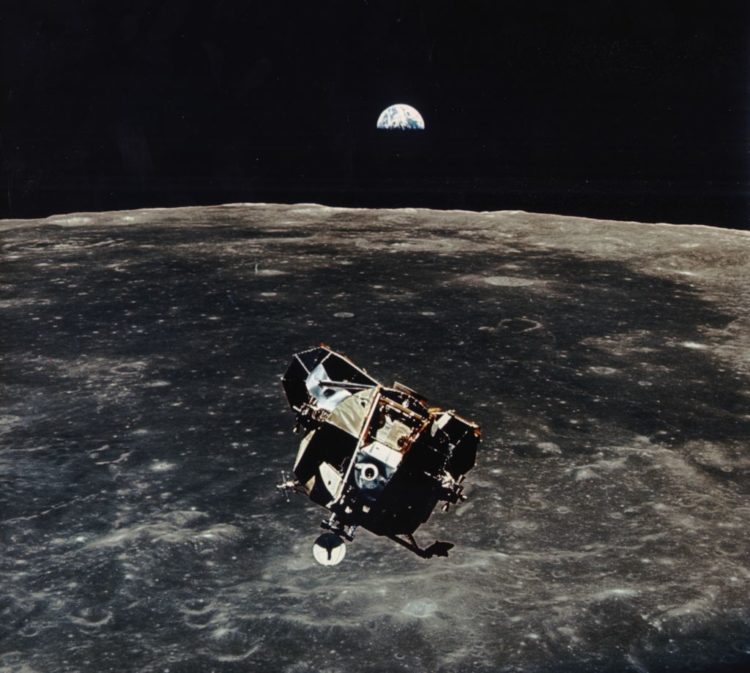
Readers interested in exploring their New England roots, or the history of the Puritan migration generally, might examine the work of genealogist Robert Charles Anderson, starting with his posts on the New England Historic Genealogical Society blog, then his books. He has written extensively about both the Bay Colony and Plymouth migrations, as well as the English roots of “the ordinary laymen who formed a complex genealogical and intellectual network, extending temporally back to the beginning of the English Reformation and geographically across all of England and even to parts of Wales.”
Notes
[1] Andrew Fraser, The WASP Question: An Essay on the Biocultural Evolution, Present Predicament, and Future Prospects of the Invisible Race (London: Arktos, 2011), pp. 29-30.
[2] John Tyndall, “In the Cause of Anglo-Saxondom,” Spearhead magazine; republished by Instauration magazine, February 1980.
[3] Ellsworth Huntington & Martha Ragsdale, After Three Centuries: A Typical New England Family (Baltimore: Williams & Wilkins), 1935.
[4] John P. Demos, “Notes on Life in Plymouth Colony,” William and Mary Quarterly (April 1965), pp. 270-272.
[5] Stewart H. Holbrook, The Yankee Exodus: An Account of Migration from New England, New York: Macmillan, 1950.
[6] Daniel Chauncey Brewer, The Conquest of New England by the Immigrant, New York: G. P. Putnam’s Sons, 1926, p. 58.
[7] Frances Trollope, Domestic Manners of the Americans, 1832.
[8] Lois Kimball Mathews, The Expansion of New England to the Mississippi, 1620-1865 (Boston: Houghton Mifflin), 1909, p. 250.
[9] Ibid., 272.
[10] Brewer, 4.
[11] Michael Lewis, “How Tom Wolfe Became . . . Tom Wolfe,” Vanity Fair, October 8, 2015.
* * *
Source: Author and Counter-Currents


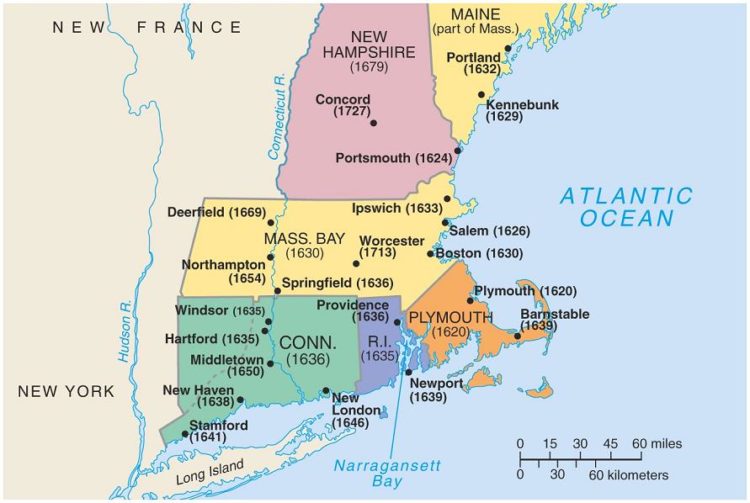


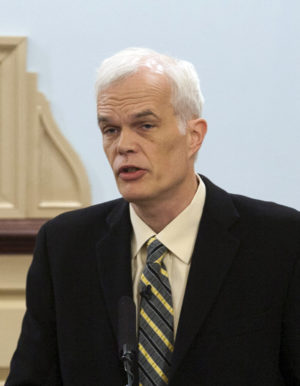

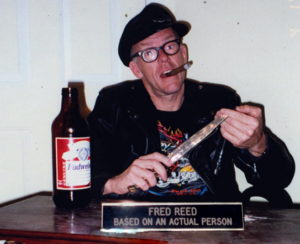
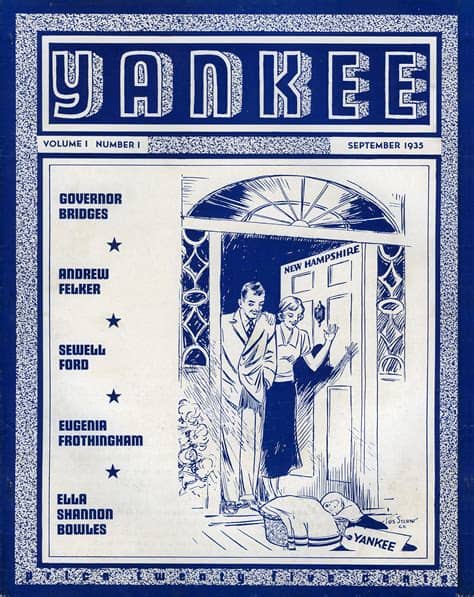

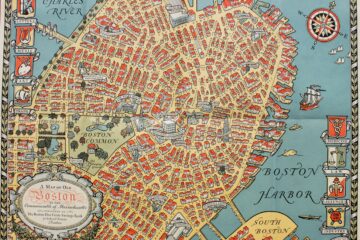

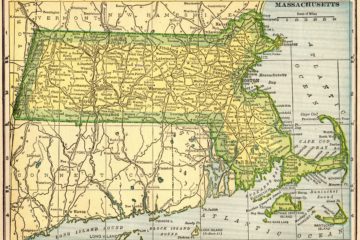
My Irish mother, having been divorced by her Italian husband, moved us to Connecticut when I was 8. She warned my sister and I about the insular small town society we were about to enter. For me it proved nirvana even in its foreigness. There was order everywhere and strict rules on behavior. Two black students in our high school could be neither touched nor talked about. In my adulthood, a high ranking state official with whom I had business, seeing in me a fellow Italian, complained bitterly about being rejected for membership in a “Yankee” country club. I listened patiently but without sympathy, feeling that people of all stripes have a right to pick their associations. Plus, “Yankee” culture was something I had grown to admire in their pretty… Read more »